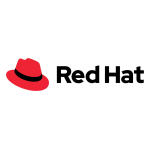
Red Hat Announces Intent to Reach Net-Zero Operational Greenhouse Gas Emissions by 2030
RALEIGH, N.C.–(BUSINESS WIRE)–#RHSummit–Red Hat, the world’s leading provider of open source solutions, today announced its ambition to achieve net-zero operational greenhouse gas (GHG) emissions by 2030 to address the global climate crisis.
Red Hat’s 2030 operational net-zero goal follows a science-aligned pathway to limit global warming to 1.5-degree Celsius above pre-industrial levels, and includes scope 1 and 2 emissions, and scope 3 emissions associated with Red Hat’s electricity consumption in third-party colocation data centers. The company has been through a rigorous exercise to develop an emissions accounting profile which establishes a baseline year of 2019.
“By creating a comprehensive roadmap that is built on our open hybrid cloud strategy and aligned to IBM’s overall climate goals, we will reduce the impact we have on the environment and preserve the planet for generations to come,” shared president and chief executive officer of Red Hat, Matt Hicks. “We all play a role in reducing our carbon footprint and this is just one of the many ways that Red Hat is doing our part.”
To achieve the net-zero goal by 2030 or sooner, Red Hat will:
- Reduce its operational GHG emissions 65% by 2025 against 2019.
- Prioritize energy efficiency efforts and renewable energy procurement, including a goal to achieve 75% renewable electricity by 2025, and 90% by 2030. Red Hat plans to expand renewable energy contracts to support the full operations of top consuming facilities and deploy sustainable design standards throughout the company’s real estate portfolio to reduce consumption.
To drive the continual improvement among suppliers and within its own value chain, Red Hat will:
- Engage ⅔ of suppliers (by spend) by 2027 and ask them to establish and maintain their own environmental management systems, and set goals to reduce their GHG emissions.
- Invest in open source software, standardization projects, and communities, such as the CNCF Environmental Sustainability Working Group, to harness the power of open source in helping customers, partners, suppliers, and other stakeholders to meet their climate goals and improve emissions.
- Develop a methodology for measuring software energy consumption and evolve reduction targets.
To ensure transparency and accountability, Red Hat will document and publicly disclose its GHG emissions reduction journey through the company’s annual Community and Social Responsibility (CSR) report and company website. Red Hat’s 2019–2021 GHG emissions data is available in Red Hat’s 2021 CSR report. These goals align with IBM’s commitment to achieve net zero greenhouse gas emissions by 2030.
Additional Resources
- Read Red Hat’s 2021 Community & Social Responsibility Report
- Learn more about Red Hat’s open hybrid cloud strategy
Connect with Red Hat
- Learn more about Red Hat
- Get more news in the Red Hat newsroom
- Read the Red Hat blog
- Follow Red Hat on Twitter
- Join Red Hat on Facebook
- Watch Red Hat videos on YouTube
- Follow Red Hat on LinkedIn
About Red Hat, Inc.
Red Hat is the world’s leading provider of enterprise open source software solutions, using a community-powered approach to deliver reliable and high-performing Linux, hybrid cloud, container, and Kubernetes technologies. Red Hat helps customers integrate new and existing IT applications, develop cloud-native applications, standardize on our industry-leading operating system, and automate, secure, and manage complex environments. Award-winning support, training, and consulting services make Red Hat a trusted adviser to the Fortune 500. As a strategic partner to cloud providers, system integrators, application vendors, customers, and open source communities, Red Hat can help organizations prepare for the digital future.
Forward-Looking Statements
Except for the historical information and discussions contained herein, statements contained in this press release may constitute forward-looking statements within the meaning of the Private Securities Litigation Reform Act of 1995. Forward-looking statements are based on the company’s current assumptions regarding future business and financial performance. These statements involve a number of risks, uncertainties and other factors that could cause actual results to differ materially. Any forward-looking statement in this press release speaks only as of the date on which it is made. Except as required by law, the company assumes no obligation to update or revise any forward-looking statements.
Red Hat, Red Hat Enterprise Linux and the Red Hat logo are trademarks or registered trademarks of Red Hat, Inc. or its subsidiaries in the U.S. and other countries. Linux® is the registered trademark of Linus Torvalds in the U.S. and other countries.
Contacts
Media Contact:
Allison Showalter
201-341-3942

